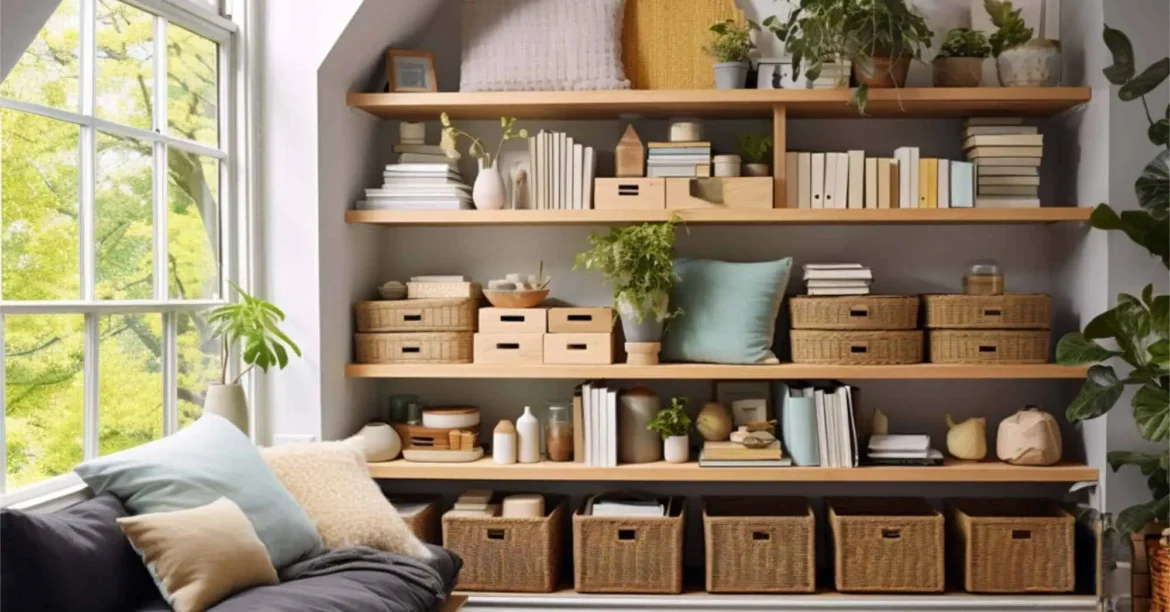Attic Conversions and Loft Storage
Victorian terraces often include attics with sloping ceilings, historically used as storage or servant quarters. Modern renovations exploit these areas creatively:
-
Built-in wardrobes and drawers: Custom-designed to fit sloped ceilings and maximize usable volume.
-
Home offices or reading nooks: Combining storage with functional living space.
-
Seasonal storage systems: Easy-access cupboards for clothing, decorations, or sports equipment.
Attic transformations extend usable square footage while providing cleverly concealed storage.
Case Studies Across the UK
Several innovative examples demonstrate the potential of creative storage in Victorian terraces:
-
London: A Chelsea terrace features under-stair pull-out drawers and full-height kitchen cabinetry, creating an airy, organized environment despite narrow rooms.
-
Manchester: Built-in alcove shelving and lofted beds in bedrooms maximize vertical space, blending function with contemporary design.
-
Brighton: Window seats and integrated media units transform the living room into a multifunctional hub, balancing storage with style.
-
Bristol: Attic conversions combine sloped-ceiling wardrobes with cozy workspaces, making the most of previously underutilized areas.
These examples highlight how thoughtful design can overcome the limitations of period layouts without compromising heritage features.
Aesthetic Considerations
Storage in Victorian terraces must also respect the home’s character. Materials, finishes, and detailing are carefully chosen to complement period features:
-
Timber finishes: Warm oak or painted MDF blends seamlessly with cornices and skirting boards.
-
Handleless or discreet hardware: Maintains clean lines and understated elegance.
-
Integrated lighting: Illuminates storage areas without interrupting room aesthetics.
-
Matching paint tones: Ensures built-in units feel like part of the original architecture rather than afterthoughts.
These considerations allow storage solutions to enhance rather than detract from a home’s charm.
Future Trends in Victorian Terrace Storage
Looking ahead, storage strategies are expected to become even more innovative:
-
Modular, reconfigurable systems: Allow homeowners to adapt storage to evolving needs.
-
Smart home integration: Motion-sensor drawers, automated cabinets, and connected inventory tracking.
-
Sustainable materials: Reclaimed timber and eco-friendly finishes reduce environmental impact.
-
Hybrid furniture solutions: Pieces that combine seating, storage, and workspace for maximum versatility.
These trends indicate that storage in Victorian terraces will continue to be both practical and stylish, blending innovation with tradition.
Conclusion: Function Meets Character
Creative storage solutions have transformed Victorian terraces from charming but impractical homes into highly functional, organized, and stylish spaces. By leveraging verticality, underused recesses, multi-functional furniture, and bespoke cabinetry, homeowners can overcome the constraints of narrow layouts and compact rooms.
The key to success lies in balancing practicality with respect for the period’s architectural heritage. When done thoughtfully, storage becomes not just a necessity but a design feature, enhancing both the beauty and usability of these historic homes.
In 2025, Victorian terraces demonstrate that even in historic properties, ingenuity can create homes that are spacious, organized, and perfectly suited to modern life — proving that timeless architecture can meet contemporary needs with elegance and creativity.

